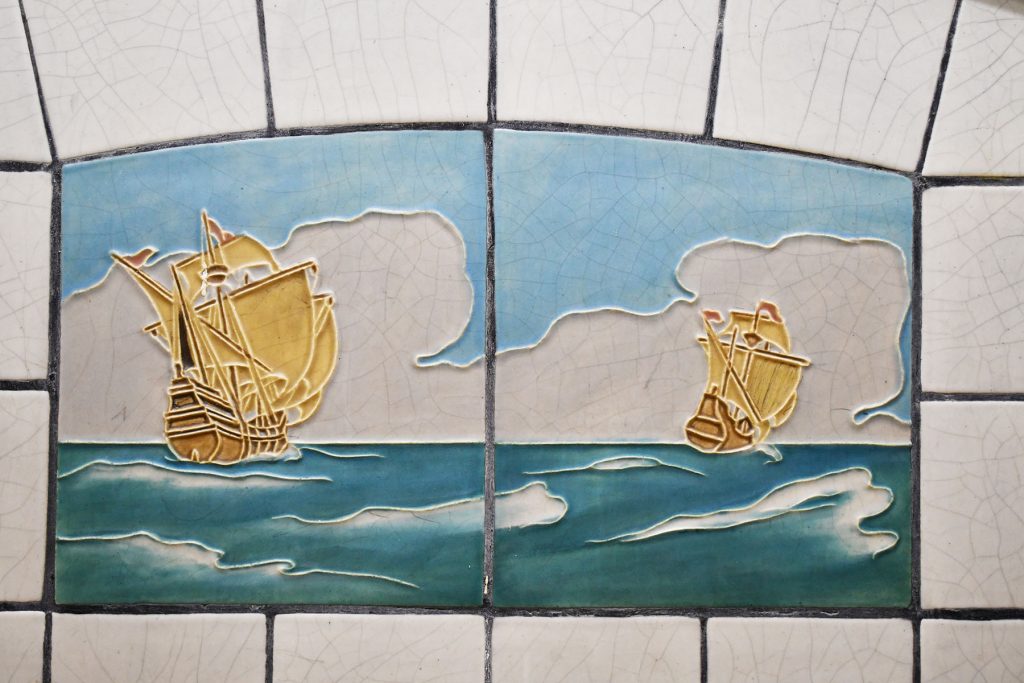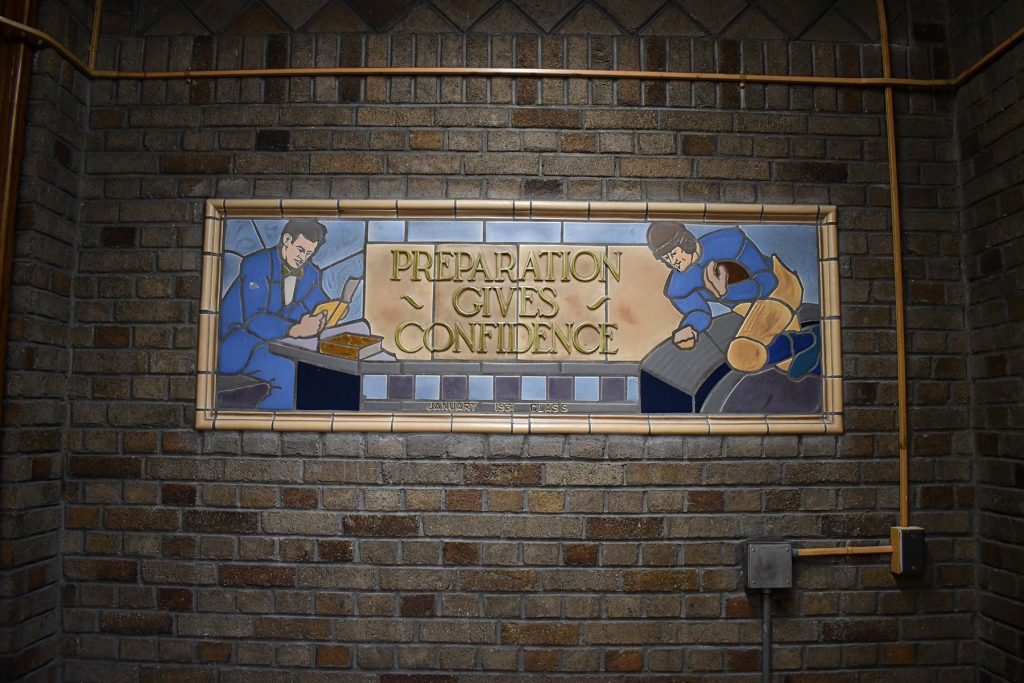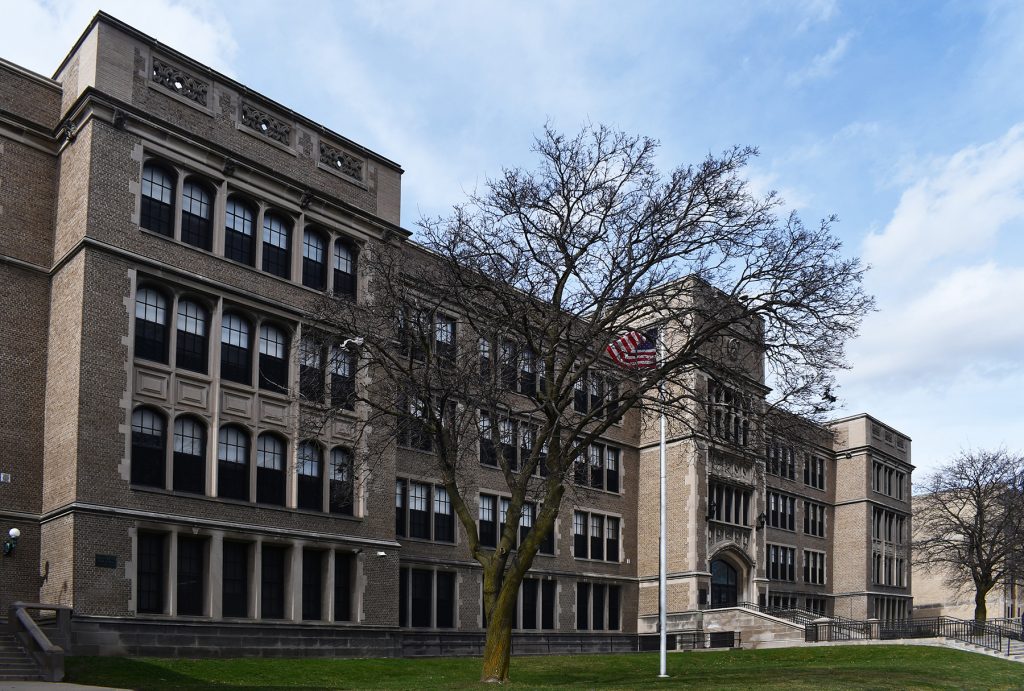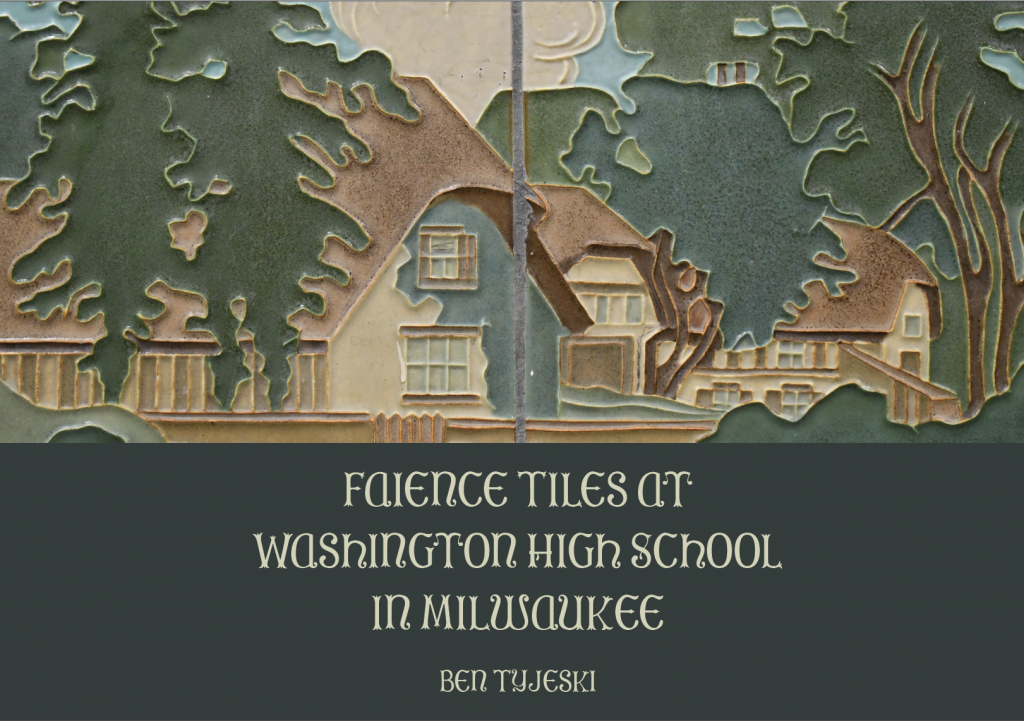Washington High School’s Tiled Bubblers Are Unique
The bubbler station became an artistic oasis in the 1920s and '30s.
Drinking fountains, or bubblers, as we call them in Milwaukee, are pretty cool. They are an excuse to take a break from class. They cool you down after an exhilarating recess. They sustain you throughout the day; they’re essential!
The lesson learned is different at each fountain, but at Washington High School on Milwaukee’s West Side, it all began in the summer of 1924 with a class gift.
In my new book, Faience Art Tiles at Washington High School in Milwaukee, with a foreword by Washington High historian Linda Durrenberg, readers will find out about the story of the first tiled bubblers installed in a Milwaukee school.
Local architects, Van Ryn & De Gelleke, designed Washington High on Milwaukee’s elegant Sherman Boulevard. When the school was constructed in 1914-16, there were no art tiles inside or out. However, in other buildings previously covered in Tile Town, the architects began using art tiles on fireplaces and in vestibules. In none of these schools, though, were tiles installed with drinking fountains.

The original tiles at a bubbler station at Washington High, the first school to install such features in the Milwaukee area. Photo by Ben Tyjeski.
All this changed when the graduating class of June 1924 from Washington High donated three tiled backdrops to drinking fountains on the 2nd floor. No other school in the Milwaukee area had a similar feature, so it is not clear how this idea came to the school. Was this the vision of the architects? Did the idea originate from Principal George Balzer? Could it have been a student?
Something we do know based on the school’s newspaper, The Washington Scroll, is that the tiled drinking fountains at Washington were based on designs from Edward McClain High School in Greenfield, Ohio.
And indeed, the tiled drinking fountains look nearly identical to the ones installed at McClain High in 1913. And who made these fabulous tiles? They were created by none other than the Rookwood Pottery Company of Cincinnati, Ohio.
This is quite a big deal because Rookwood tiles are uncommon in the Milwaukee area. The exterior of the Tripoli Shrine Center (built 1925) has Rookwood tiles on its domes and iwan, and another elementary school in MPS has Rookwood owl tiles. Other than that, it’s a mystery how they ended up being used at Washington High School.
Following Washington’s example, many schools built in the Milwaukee area during the late 1920s and 1930s have spectacular, bubbling fountains decorated with faience art tiles. While this was not uncommon across the nation, it is extraordinary that so many schools in the area have the colorfully decorated features in their hallways and classrooms.
But Washington High’s tiled fountains are unique in that they were class gifts from the graduating seniors. This practice was common in Cincinnati schools where teachers, students, PTA’s, clubs, and others donated tiled fountains to schools, but in Wisconsin this never became a tradition except at Washington.
It apparently became a lesson in the art of giving, and nurtured a sense of school spirit for Washington scholars. In following years, the Class Gift Committee and Principal Balzer had more bubblers decorated with Rookwood faience tiles. Each of the surviving tiled back fountains are featured in my latest book.

Detail of tall ships on tiles created by the Rookwood Pottery Co. in Cincinnati, Ohio. Photo by Ben Tyjeski.
You will see tiles of tallships, pastoral cottages, forests, and more. Historically when the school was under Balzer’s administration, school historian Linda Durrenberg says the hallways were filled with paintings. These bubblers fit right in, but now, they stand out among bare walls and are more like a breath of fresh air.
These tiled panels are featured in the book Faience Tiles at Washington High School In Milwaukee, as well as in the Carl Bergmans and the Continental Faience & Tile Co. Inside you will learn more about Washington High, its traditions of class gifts, the tiles and how they were made, as well as generous photographs illustrating the craft and splendor of these historic art tiles.

One of two custom panels created for Washington High in 1931, manufactured by the local Continental Faience & Tile Co. Photo by Ben Tyjeski.
This is the seventh in a series of stories on tile artworks in Milwaukee by writer Ben Tyjeski, an art teacher who was named a 2023 Mildred L. Harpole Artist of the Year by the Milwaukee Arts Board.
If you think stories like this are important, become a member of Urban Milwaukee and help support real, independent journalism. Plus you get some cool added benefits.
Tile Town
-
Ornamental Owls are Mentors in Milwaukee’s Schools
 Oct 6th, 2025 by Ben Tyjeski
Oct 6th, 2025 by Ben Tyjeski
-
Handmade Tiles Found in 101 Milwaukee Apartment Buildings
 Aug 4th, 2025 by Ben Tyjeski
Aug 4th, 2025 by Ben Tyjeski
-
Secret Garden Unveils Classic Batchelder Fountain
 Aug 28th, 2024 by Ben Tyjeski
Aug 28th, 2024 by Ben Tyjeski





















